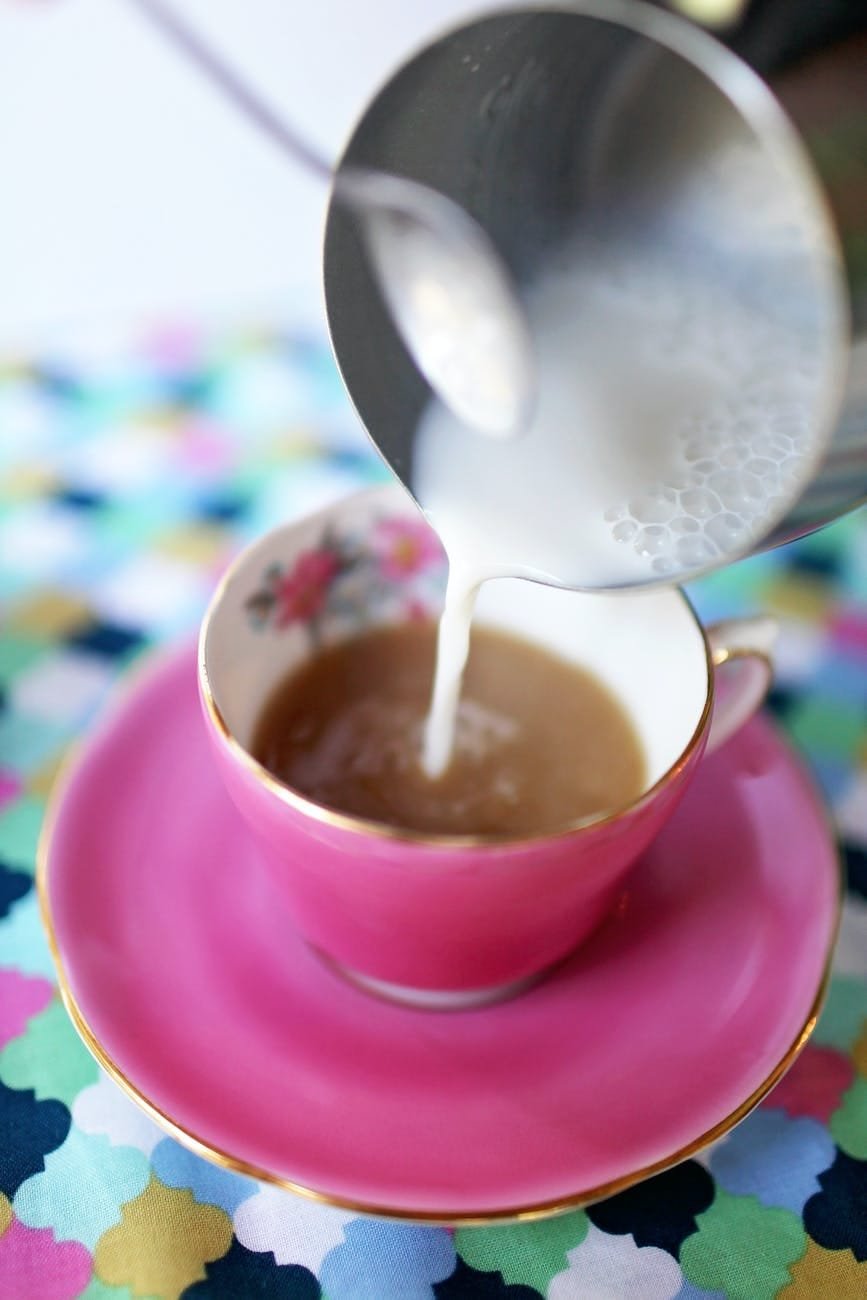Nursery Tea, Cambric Coffee and Milk Lemonade

Join the grandbaby and me for a cup of cambric tea (or coffee or lemonade) as we dive into another trip down the research rabbit hole!
Occasionally when I’m knee deep in research I run across something that isn’t from the Regency era, but is so shiny that I have to chase it down anyhow. Such was the case when, while nose deep in a period cookbooks–imagine me doing that, yeah, shocking I know– I found references to special tea served in the nursery.

Miss Beecher’s Domestic Receipt Book (which you can find both on google play for a digital version and on Amazon if you like hard copies) is an American cookbook initially published in 1846. Scholars consider this particular cookbook of ‘culinary importance.’ In other words it gives us a lot of insight into food and culture of this period. While the book was published a little bit after the end of the Regency era, most cookbooks of this type include a lot of recipes handed down through generations. The recipes often reflect foods and practices of earlier periods.
That being said, a particular section caught my eye: Children’s Drinks. Since I often have my 2 year old grandson with me, I was intrigued what the cookbook would say about some foods dedicated to children.
The section began with:
There are drinks easily prepared for children, which they love much better than tea and coffee, for no child at first loves these drinks till trained to it. As their older friends are served with green and black tea, there is a white tea to offer them, which they will always prefer, if properly trained, and it is always healthful.
I am intrigued both by the notion of training a child to drink tea and/ or coffee, and the idea of properly training a child’s preferences to liking this ‘white tea.’ Alas, she says nothing about what this training might entail, but she does offer this receipt:
White Tea.
Put two teaspoonfuls of sugar into half a cup of good milk, and fill it with boiling water.
So basically this was sugared milk, cut half and half with boiling water. Ok. Sounds a little bland, but ok. That got me thinking, I’d read about something like this before.
And I did, from way back in the day, Laura Ingalls Wilder referred to this same sort of beverage, with a splash of tea added, as Cambric tea. The drink was named for its resemblance to cambric cloth, a very thin white fabric.

Some say the French first developed this beverage as an alternative to the strong teas reserved for hale and hearty adults. Cold beverages were considered hard on the digestion (and consuming frozen stuffs like ice cream was positively taking your life into your own hands!) So warm drinks, even plain hot water were prescribed as healthful.
Some suggest Cambric tea increased in popularity during the 18th and 19th centuries (especially among the pioneering types) because of the availability of the basic ingredients. Fresh milk could be had from one’s own cows and sugar was a staple available at local mercantile stores. Tea (and coffee, but we’ll come to that in a minute) were expensive and often harder to acquire.
Culinarylore.com suggests that as coffee became popular, cambric tea gave way to ‘coffee milk’ which is generally more milk and sugar than coffee. While this could be true, coffee milk–cafe con leche– is also a long standing Hispanic tradition.
We don’t drink huge amounts of coffee at home, but when we brew a pot I always double what I think we’ll need. I take the extra, dilute it by half with milk, add sweetening or flavored syrups and drink it over ice.
My grandbaby seems to have coffee milk radar. I can’t hide my glass from him–he zeroes in on it and it the sweetest way possible points to it and says, “Some?” What nana in the world can say no to that?
Since we only drink decaf, I have no compunction about pouring him his own glass of coffee milk. Then he sits in my lap and we drink coffee milk together. Happy nana, happy baby!
One drink from Miss Beecher I will definitely not be trying, though. The thought just (literally) curdles my stomach.
Delicious Milk Lemonade.
Pour a pint of boiling water on to six ounces of loaf sugar, add a quarter of a pint of lemon juice, and half the quantity of good sherry wine. Then add three quarters of a pint of cold milk, and strain the whole, to make it nice and clear.
I’m not even sure where to begin with this one really. Lemon juice and milk just doesn’t sound appealing and handing good sherry to a two year old–yeah, no, don’t think so. A few of our ideas about what is good for children has definitely changed with the times!

Milk lemonade? I’m assuming that the milk would curdle, which would explain the need to strain it. I do love to make a dessert which is whipped cream whipped stiff with sugar, then with lemon juice and white wine and lemon zest stirred in. For some reason it doesn’t curdle and is delicious and not too sweet. It’s a variation on syllabub. Bad for the diet, bad for the teeth but who cares?
Oh heavens! Sherry for babies? Well no I don’t think so, and like Diana I think the milk would curdle – ugh!
My children drank water, fresh squeezed orange juice or milk with the occasional hot chocolate as a treat.
I like Earl Grey tea and the occasional cappuccino as a change from my usual water.
My four grandsons usually drink milk or water, they all like coconut water and my two Australian boys love their special juice (beetroot!)
Lemon juice + milk = buttermilk. If you have a recipe that calls for buttermilk and you don’t have any, you can make your own by adding lemon juice or vinegar to milk. That’s why they had to strain it. I might be able to tolerate a few of those recipes, but that last one… I don’t think so. This has been fascinating. Back in the day, I would have been horrified by the notion of drinking iced coffee… but now I love it. Who knew?
the milk lemonade sounds like a version of caudle or posset, which is supposed to curdle; you make it richer by adding beaten eggs and then it’s nowadays called an egg nogg. The thinner version was used in medieval times as a ‘bever’ or a meal between meals, usually for workmen with ale not wine, and a touch of honey . It had enough calories to keep them going but was light enough to stomach whilst working hard.